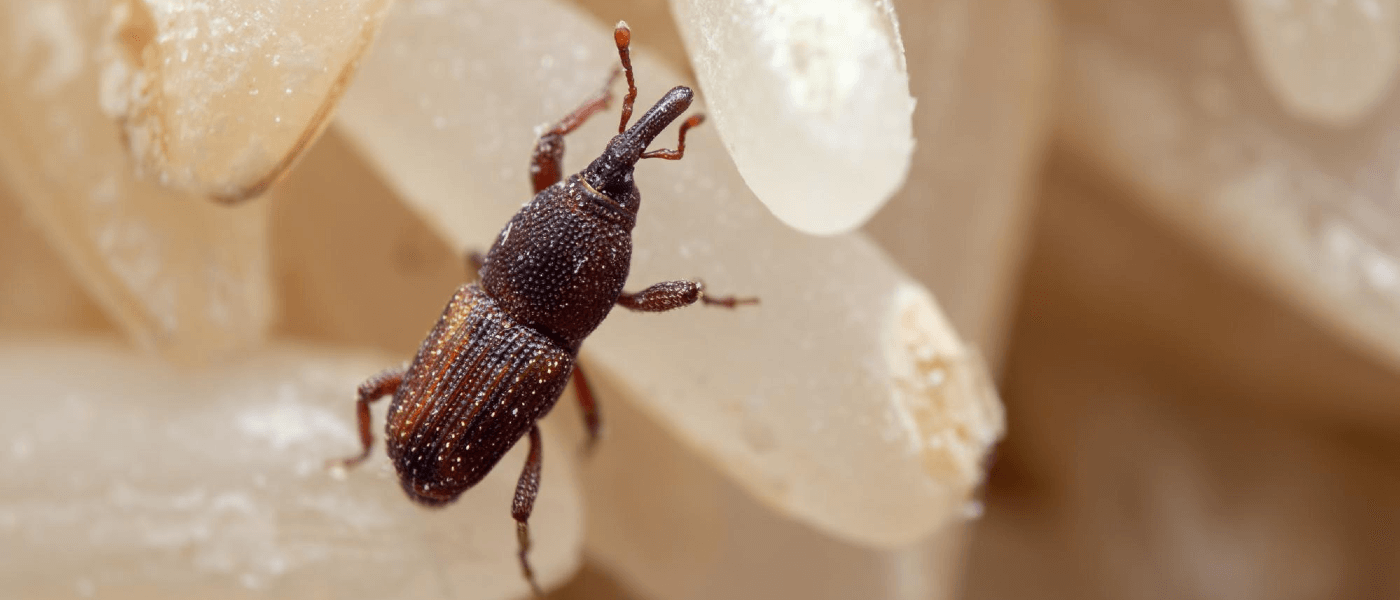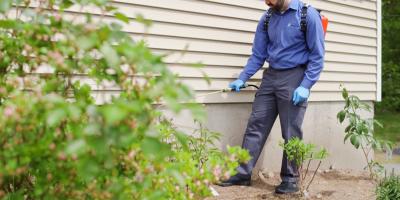Bugs in Your Rice? Meet the Weevil.

You never thought it would happen to you, but here you are, searching the internet for “what are these bugs in my rice?” You’re probably only moderately interested in the entomology of the situation -- species, life cycle, etc. -- and vastly more concerned with “how do I make sure this never, ever happens again?”
Well, good news: We can handle all of your questions and then some.
Weevil is as Weevil Does
If strange little dark specks in your stored grain or seed turned out, upon closer inspection, to be tiny creatures, what you’re almost certainly looking at is a weevil. Weevils begin life as tiny, wrinkled, grub-like larvae that live in -- and eat from -- the insides of seeds and grain fibers, only emerging as they enter adulthood after about a month in the larval state.
Adult weevils develop slender, hard-shelled bodies that appear pitted with tiny holes. They grow up to about 1/8-inch long and develop a reddish-brown color. There are actually several distinct species, including rice weevils, granary weevils and maize (corn) weevils. Rice weevils are distinguishable by the four faint yellowish spots on their backs, but they all have that trademarked snout nose.
The Lesser of Two Weevils
There are, essentially, two types of weevils -- the pest species, which comprise grain weevils, and the non-pests, which you’ll typically find outdoors feasting on all sorts of various plants. Although the outdoor variety does include some destructive specieses (the boll weevil is a notable destroyer of cotton), for our purposes, they’re mostly harmless.
It’s those granary weevils you’ve got to keep an eye out for. They’re the ones that feed on starches like rice, flour, corn and cornmeal, as well as nuts, beans, cereals and other such foods you keep in your pantry. Unlike beetles, however, that live and feed on such foods, weevils, as mentioned, start their life inside your food.
See no Weevil?
That’s the disturbing thing about them -- just because you can’t see them, doesn’t mean they aren’t there. The good news, however, is they’ll soon make themselves known when they emerge from inside the grain, and once they do, you can generally take care of the problem yourself without having to call a pest control pro (unless, of course, you can’t find the source of the infestation).
The best way to control for weevils is to keep them out in the first place. Since they don’t typically invade the same way other household pests do, this doesn’t mean checking for openings in your foundation: It means checking for openings in your groceries. If you do discover weevils inside your home, physically remove them with a broom or vacuum (and throw away any contaminated food stores). As a last resort, a relatively safe class of pesticides called pyrethrins can be effective against weevils.
Fear No Weevil
How you process and store your food can go a long way to preventing weevils.
First, inspect all grains upon purchase, looking for those telltale little reddish dots, small openings in bags or cardboard containers, or even cobwebs (a common sign of another common pantry pest). Freeze your grains for at least a week -- but you can store them in your freezer permanently, too. Always store grains in tightly sealed glass, metal or sturdy plastic -- not bags. And, of course, keep your pantry clean and free from debris at all times.
The safest thing to do if you discover weevils is to rid your pantry of any items not stored properly. Grain weevils can bore through cardboard and thin plastic, for example. Wipe your shelves down with white vinegar and check regularly for weevils to reappear.
Other Signs of Weevils
If you find webbing or a lot of worm-like larva, you might have a weevil problem. If you see insects crawling or flying around your pantry, you have a big weevil problem. Sawdust-like droppings called “frass” can be a sign as well.
Eat no Weevil (But It’s Okay if You Do)
Eating weevils won’t make you sick, although finding dead weevils in a packet of grains is a surefire way to know there’s some pesticide residue present. In fact, 100 grams of weevils will provide you with 6.7 grams of healthy protein.
Banish Weevils for Good
If you’ve gone through all of these steps, plus checked surrounding pantries or drawers, as well as anywhere else that grains might be stored (think, basement or other food storage closets) -- plus remembered to check pet food and grass seed -- and you still can’t find the source of your weevil problem, it may be time to call in a pest control professional.
A pest pro can do a thorough inspection of your home and take care of the problem for good. Weevils are not a pest that will go away on their own, so it’s important to have the issue nipped in the bud as soon as possible.
Got a weevil puzzle? We can help. Give us a call to schedule an inspection with the pros.



